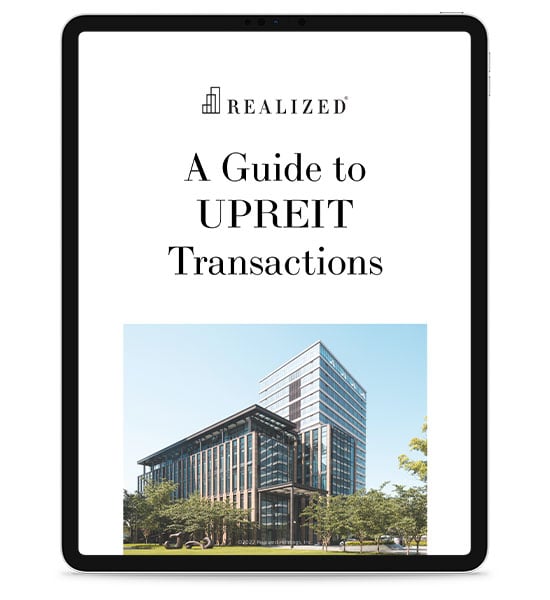
Umbrella partnership real estate investments (UPREITs) are a tax-advantaged strategy that allows you, as an investor, to contribute your real estate assets in exchange for operating partnership (OP) units. Before entering this type of investment vehicle, however, it’s critical to understand the documentation involved. For UPREITs in particular, the partnership agreement matters significantly. This document governs the operating partnership and dictates your rights, distribution of dividends, and many other partnership functions.
Below, Realized 1031 shares the key terms and language to watch out for in UPREIT partnership agreements, so you’re aware of what you should search for in the fine print to avoid unwanted surprises.
Understanding the UPREIT Partnership Agreements
In an UPREIT, the REIT forms an operating partnership that owns the underlying assets, and property owners who contribute real estate receive OP units in return. The operating partnership agreement is the governing document of the OP. You’ll find that the contract outlines the rights and responsibilities of both the REIT (as the general partner) and the contributors (as limited partners or unit holders). You can think of the agreement as a rulebook that defines everything, from profit distribution to conversion rights and exit strategies.
Key Terms to Understand in UPREIT Partnership Agreements
Before entering UPREITs, it’s crucial for you to understand the minutiae and fine print of the partnership agreement, not just the forecasted dividends and tax deferral benefits. Knowing the key terms helps you determine if the UPREIT suits your overall investment strategy.
1. Conversion Rights
This section discusses how OP units can be converted into REIT shares. The process is the primary way to liquidate your capital, so this section must be examined thoroughly to determine whether conversion is relatively straightforward or not.
What To Watch Out For: UPREITs usually impose a holding period before conversion is allowed. In most cases, it’s one year, but some may limit conversion for a longer period.
2. Valuation and Unit Allocation
OP units are not publicly traded. As such, their valuation process is much more complex for purposes like buyouts or inheritance. The partnership agreement must provide a clear valuation method to ensure objectivity and consistency.
What To Watch Out For: Make sure that the valuation method is not one-sided, or that the appraiser is selected only by the general partner or REIT. A fair valuation method ensures that you receive an accurate fair market value.
3. Management and Control
The partnership agreement must clearly assign control to the REIT, which serves as the general partner that oversees operations and management, while investors give up day-to-day control.
What To Watch Out For: Look for limited partnership protective rights to determine if your consent is required for major decisions.
4. Distribution Rights
This section discusses how the profits will be distributed among OP unit holders and the order of priority.
What To Watch Out For: The fine print may discuss how the REIT may defer distributions under unique circumstances or give preferential returns to certain partners. Understanding these provisions helps you set realistic income expectations.
Final Thoughts on UPREIT Partnership Agreements
While UPREITs offer various benefits, they can be complex financial structures. One way to understand these investment vehicles down to the smallest detail is by examining the partnership agreement closely and learning about your rights as a limited partner, protections within the OP, and various other aspects of the UPREIT itself. Make sure to work with an attorney or tax advisor when reviewing the agreement to gain insight beyond the technical jargon.
Sources:
https://www.investopedia.com/terms/u/upreit.asp
https://corporate.findlaw.com/corporate-governance/upreit-shares-and-tacking-under-rule-144.html



